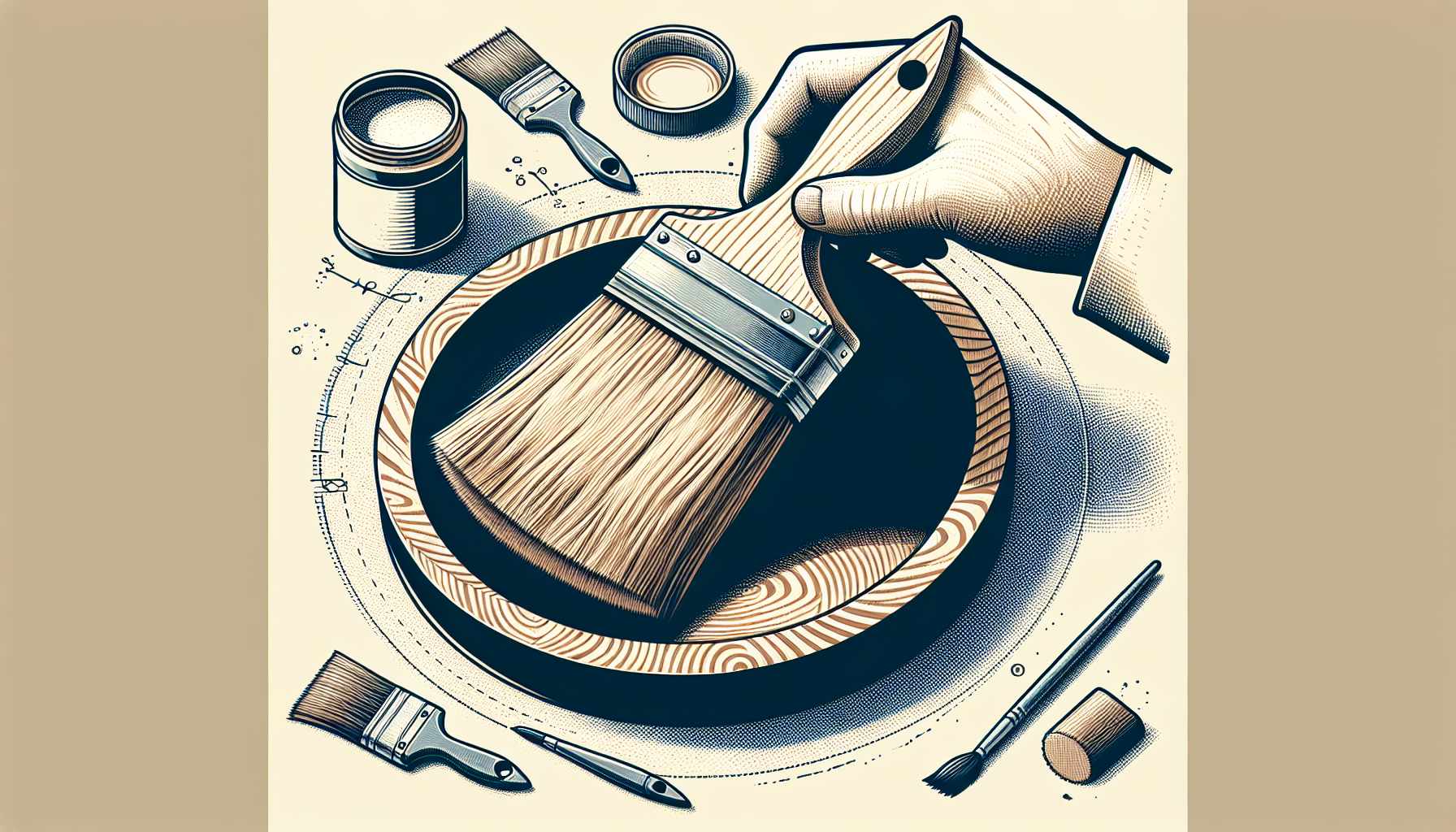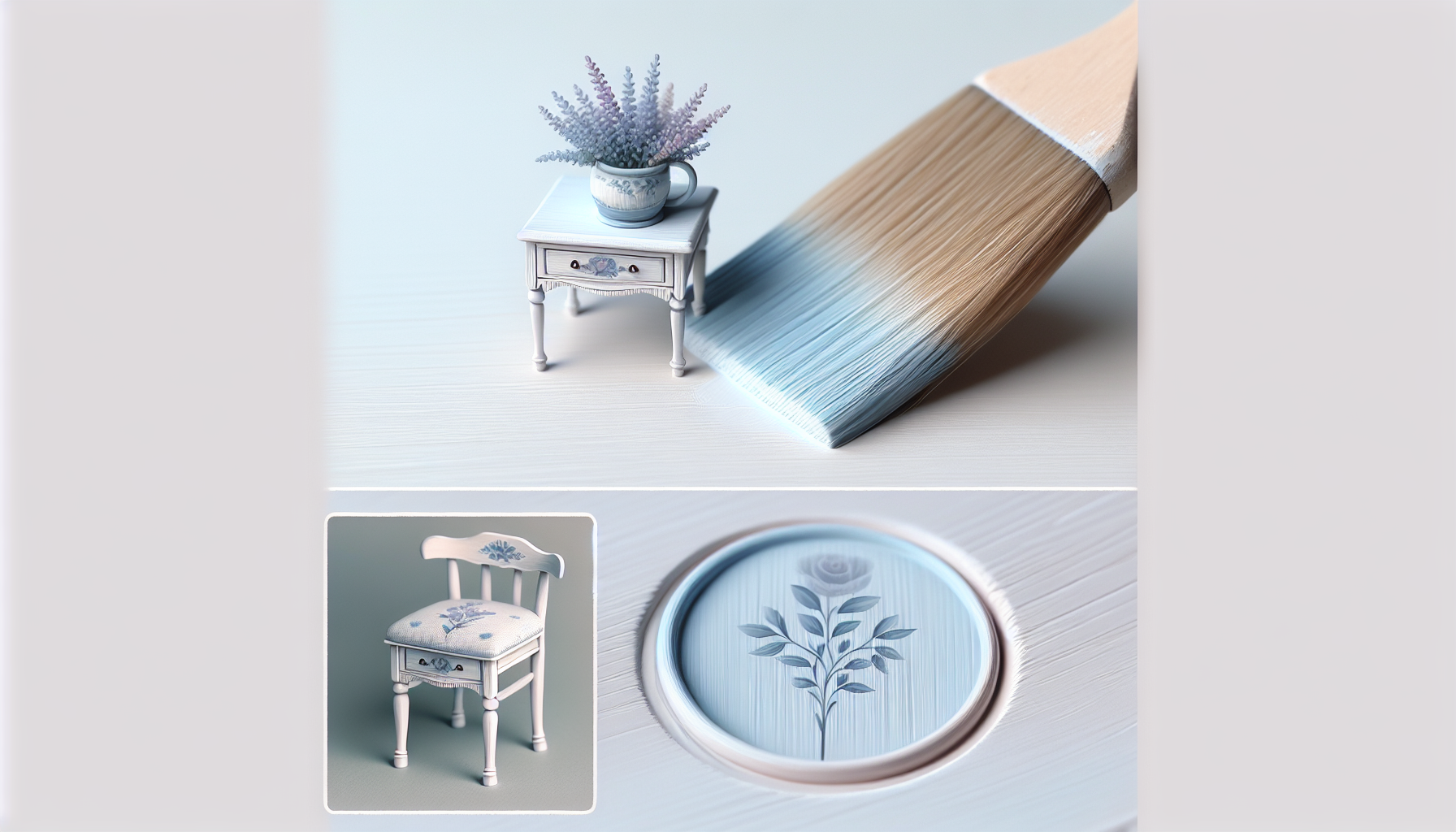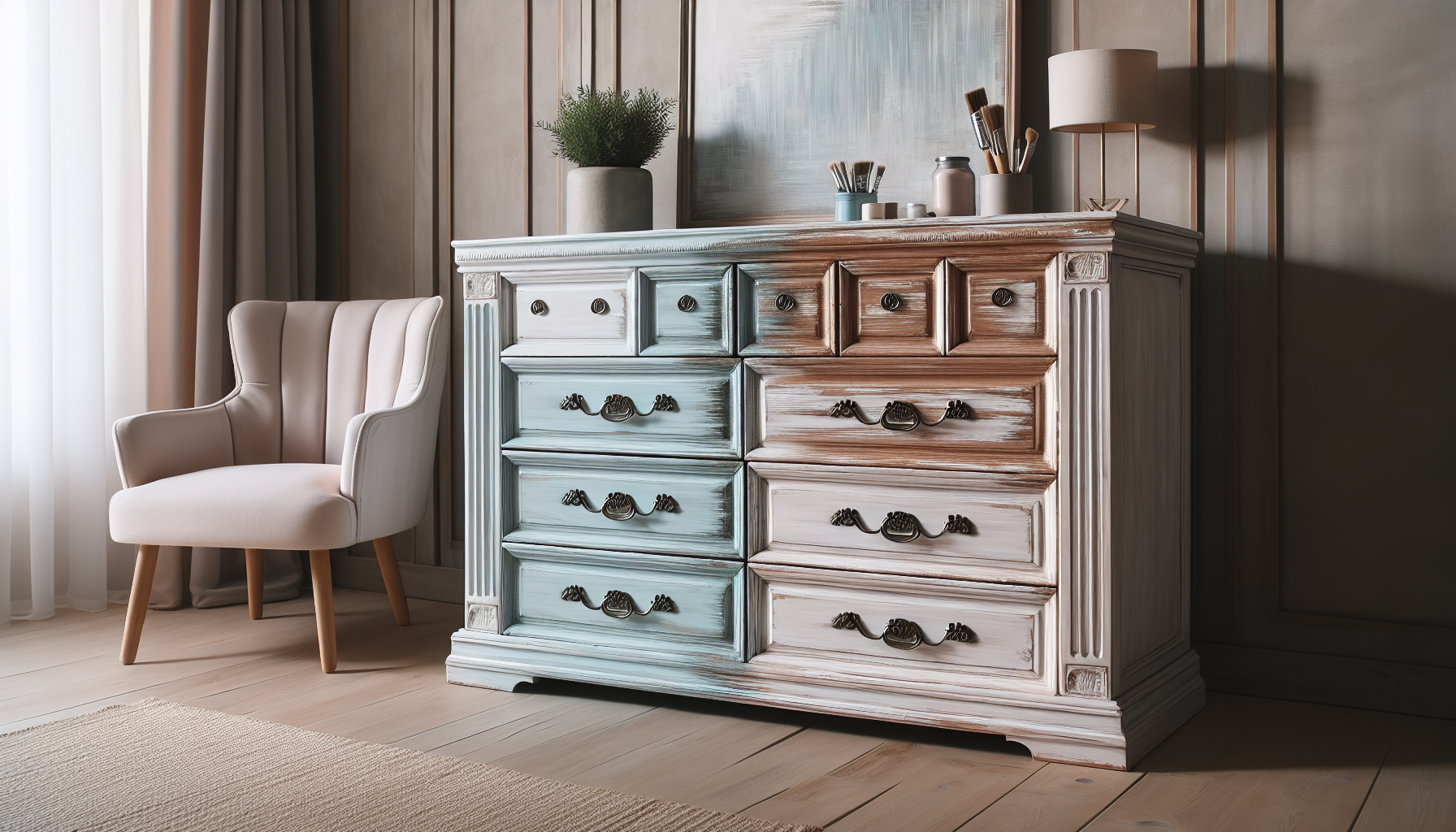In the realm of furniture painting, the choice of brush can make a significant difference in achieving a flawless finish. When it comes to chalk paint, opting for a round brush can prove to be crucial. The unique design of a round brush allows for better control, smooth application, and the ability to reach intricate details of a piece. In this article, you will discover the various advantages of using a round brush for chalk paint and how it contributes to the overall quality and aesthetics of your painted furniture.
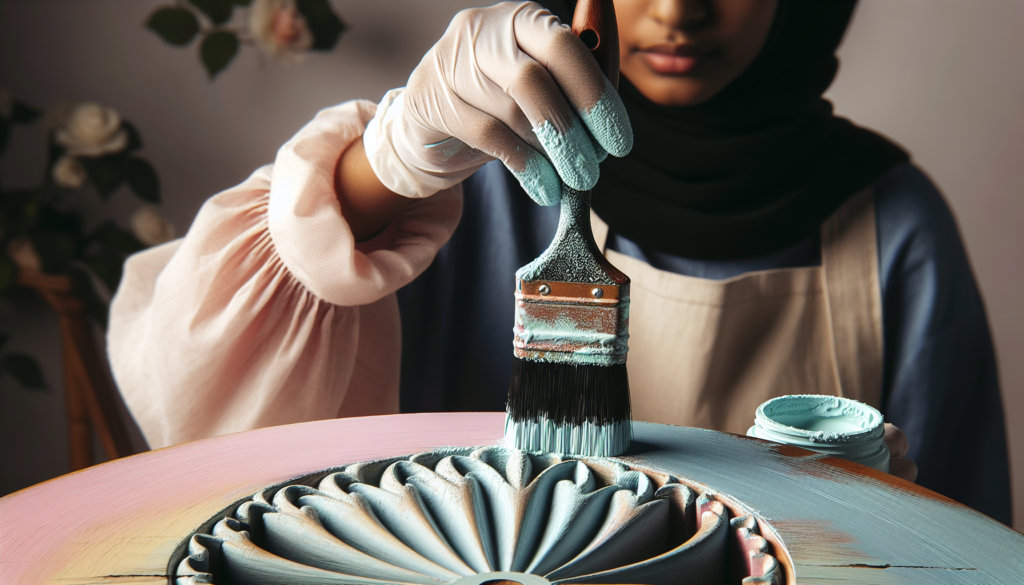
What is chalk paint?
Chalk paint is a type of paint that has a unique matte finish, reminiscent of vintage furniture and décor. It is known for its excellent coverage, ability to adhere to various surfaces without the need for priming, and its ease of use. Chalk paint is perfect for transforming outdated or worn-out furniture, giving it a fresh new look with a touch of charm.
Definition of chalk paint
Chalk paint, also known as decorative paint, is a water-based paint that contains chalk and other additives for better adhesion and durability. It differs from traditional paint due to its unique composition, which allows for easier distressing and aging techniques. Chalk paint provides a velvety, matte finish that adds character and depth to any project.
Characteristics of chalk paint
Chalk paint offers several desirable characteristics that make it a popular choice among DIY enthusiasts and professional painters alike. One key characteristic is its excellent coverage, as it typically requires fewer coats compared to regular paint. Chalk paint also has a quick drying time, allowing for faster project completion. Additionally, it can adhere to a variety of surfaces, including wood, metal, glass, and even fabric. The chalky finish of this paint adds a touch of elegance to any piece, giving it a shabby chic or vintage look.
Advantages of using a round brush for chalk paint
When it comes to applying chalk paint, using the right brush is crucial for achieving optimal results. A round brush, specifically designed for chalk paint, offers several advantages over other brush types on the market.
Even application of paint
A round brush helps ensure an even application of chalk paint, as the bristles are evenly distributed around the brush head. This allows for a consistent coat of paint to be applied, resulting in a smooth and flawless finish.
Efficient coverage of intricate details
One of the significant advantages of using a round brush for chalk paint is its ability to reach and effectively cover intricate details on furniture and décor pieces. The round shape of the brush head allows for better control and precision, making it easier to paint tight corners, curves, and edges effortlessly.
Smoother finish
The bristles of a round brush are typically softer and more flexible than those of other brushes. This softness allows the brush to smoothly glide over the surface, reducing the likelihood of brush strokes and creating a smoother, more polished finish.
Less brush marks
Uneven brush strokes can be a common issue when using certain brushes with chalk paint. However, a round brush minimizes the appearance of brush marks, offering a more professional-looking result. The round shape of the bristles helps to blend the paint more smoothly, leaving behind a seamless finish.
Easier to reach corners and edges
A round brush’s shape allows for greater accessibility to corners and edges, which can be difficult to reach with other brush types. The rounded bristles enable precise application and help eliminate the need for additional tools, ensuring a consistent paint job throughout the entire surface.
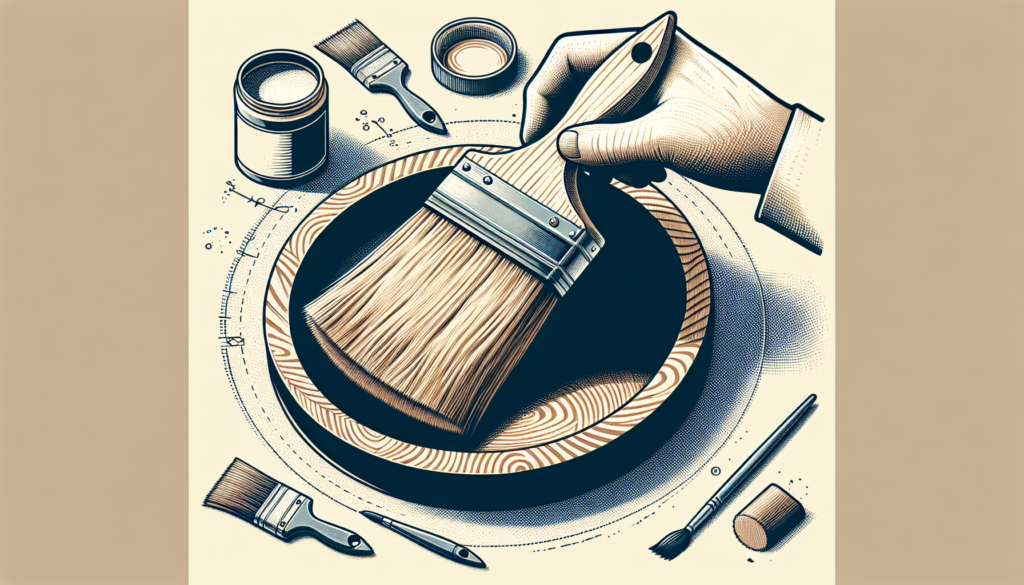
Choosing the right round brush for chalk paint
Selecting the appropriate round brush for chalk paint is essential to achieve the desired results. Consider the following factors when choosing a round brush for your project.
Bristle type
Round brushes for chalk paint typically come in two main bristle types: natural and synthetic. Natural bristles, commonly made of animal hair, are ideal for applying oil-based chalk paint, while synthetic bristles are better suited for water-based chalk paint. Each bristle type has its own unique qualities, so consider the type of paint you will be using and choose a brush accordingly.
Bristle length and width
The length and width of the bristles also play a role in the brush’s performance. Longer bristles are useful for reaching into tight corners, while shorter bristles provide better control for more intricate detailing work. Additionally, consider the width of the brush head, ensuring it matches the size and scale of your project.
Handle design and comfort
The handle of a round brush can greatly impact your painting experience. Look for a brush with an ergonomic handle design that provides a comfortable and secure grip. This will help prevent hand fatigue during extended painting sessions and allow for better control and maneuverability.
Proper technique for using a round brush with chalk paint
While using a round brush for chalk paint offers many advantages, proper technique is crucial to achieving the best results. Follow these steps for optimal application.
Loading the brush with paint
Dip the bristles of the round brush into the chalk paint, ensuring the bristles are evenly coated but not overloaded with paint. Tap off any excess paint on the edge of the paint container to prevent drips and runs.
Applying the paint in even strokes
Begin by applying the chalk paint in long, even strokes, moving in the direction of the grain or desired brushstroke pattern. The round brush’s shape allows for better control and smoother application, resulting in a more seamless finish.
Blending and feathering the paint
To avoid visible brush strokes, gently blend or feather the paint as you work. This can be achieved by lightly overlapping each stroke with the previously painted area, creating a soft transition between brush strokes.
Avoiding overloading the brush
It is crucial not to overload your round brush with too much paint, as this can lead to a heavy and uneven application. If you find that your brush is too saturated with paint, gently tap it on the edge of the container to remove any excess before continuing.
Working in small sections
To prevent the paint from drying too quickly and leaving streaks, it is best to work in small sections at a time. This allows you to maintain control over the application and ensure a consistent finish before moving on to the next area.
Other tools for working with chalk paint
While a round brush is an excellent tool for applying chalk paint, there are other tools that can be useful for specific applications or techniques.
Paint rollers
Paint rollers can be used to apply chalk paint to larger surfaces, such as tabletops or walls. However, they may not provide the same level of control and precision as a round brush, so they are best suited for areas where a smooth finish is not as critical.
Foam brushes
Foam brushes are affordable and great for touch-ups or small-scale projects. They can be easily discarded after use, eliminating the need for extensive cleanup. However, they may not offer the same level of coverage and control as a round brush.
Artist brushes
Artists’ brushes, particularly those with fine bristles, can be used for more detailed work or intricate designs. These brushes allow for precise and delicate painting but may require additional time and effort due to their smaller size.
Spray guns
For larger projects or when a highly smooth finish is desired, spray guns can be a viable alternative to brushes. Spray guns offer efficient and even coverage, saving time and effort. However, they require proper ventilation and protective gear for safety.
Round brush care and maintenance
Taking care of your round brush is essential to ensure its longevity and optimal performance. Follow these tips to properly care for and maintain your round brush.
Cleaning the brush after each use
After completing your project, thoroughly clean the round brush using warm water and mild soap. Gently massage the bristles with your fingers to remove any paint residue. Rinse the brush under running water until the water runs clear. Make sure to reshape the bristles, lightly pressing them between your fingers to remove excess water.
Preventing paint buildup in the ferrule
The ferrule, the metal portion of the brush that holds the bristles, can accumulate paint residue over time if not properly cleaned. To prevent this buildup, be diligent in cleaning the bristles thoroughly, ensuring all paint is removed from the ferrule area.
Proper storage of round brushes
To maintain the shape and condition of your round brush, it is important to store it properly. Allow the brush to air dry completely before storing it upright or hanging it with the bristles facing down. This will prevent the bristles from becoming misshapen or bent.
Common mistakes to avoid when using a round brush with chalk paint
While using a round brush for chalk paint can yield beautiful results, there are common mistakes to avoid to achieve the best outcome.
Using too much pressure
Applying excessive pressure can lead to uneven application and the appearance of brush marks. Instead, let the brush do the work and use gentle, smooth strokes for an even finish.
Letting the paint dry on the brush
Allowing the paint to dry on the brush can result in hardened bristles, making it difficult to achieve a smooth application in subsequent coats. Clean your round brush as soon as possible after use to prevent this.
Leaving brush marks
Not blending or feathering the paint properly can leave visible brush marks on the surface. Remember to lightly overlap each stroke and blend areas together for a seamless finish.
Not blending the paint properly
When working with multiple coats of chalk paint, it is important to blend the paint seamlessly between layers. Failing to do so can result in uneven color distribution and a patchy appearance.
Tips and tricks for achieving the best results with a round brush
To maximize the potential of your round brush and achieve the best possible results, consider the following tips and tricks:
Working in thin layers
Applying chalk paint in thin, even layers allows for better control and more even coverage. It also helps to prevent the paint from pooling or creating a heavy buildup, resulting in a more professional-looking finish.
Using a damp brush for smoother finish
Lightly dampening the round brush with water before applying chalk paint can help create a smoother finish. This technique thins out the paint slightly, allowing for easier application and reducing the appearance of brush strokes.
Experimenting with different brush techniques
Don’t be afraid to experiment with different brush techniques to achieve various effects. For example, dry brushing can create a distressed or aged appearance, while stippling can add texture and depth to your project.
Using a topcoat to protect the painted surface
Once your chalk paint has dried completely, consider applying a topcoat to protect the surface and enhance the paint’s durability. A clear wax or polyurethane topcoat can provide added protection against wear and tear, ensuring your project remains beautiful for years to come.
Round brush alternatives for chalk paint
While a round brush is ideal for many chalk paint applications, there are alternatives available that may better suit your needs.
Flat brushes
Flat brushes offer a larger surface area for applying paint, making them ideal for large, flat surfaces. They can produce a smooth, even finish for projects that do not require intricate detailing.
Angled brushes
Angled brushes are excellent for reaching into tight corners and edges. Their angled shape allows for precise application and control, making them suitable for projects that require both broad coverage and detailed work.
Stencil brushes
Stencil brushes feature short, dense bristles specifically designed for stenciling techniques. They are ideal for creating patterns, designs, or borders using chalk paint.
Sponge brushes
Sponge brushes are another alternative for applying chalk paint, especially on smaller projects or areas that require texture. Their unique texture allows for a different aesthetic, adding depth and distinct patterns to your painted surfaces.
Conclusion
Using a round brush for chalk paint offers several advantages over other brush types. The even application, efficient coverage of intricate details, smoother finish, reduced brush marks, and easier access to corners and edges make it an excellent choice for any chalk paint project. By selecting the right round brush, mastering the proper technique, and caring for your brush correctly, you can achieve professional-looking results that enhance the beauty and charm of your furniture and décor pieces. Whether you are a DIY enthusiast or a professional painter, a round brush is an invaluable tool in your chalk paint arsenal.
